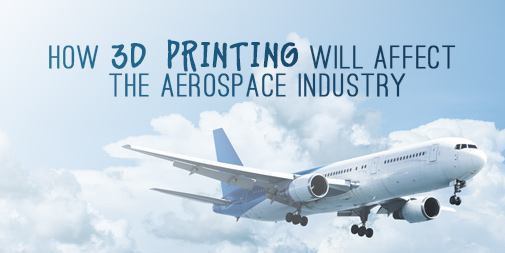Starting out as an Aerospace Engineer at my first company in the early 1990s, I remember being introduced to “real” email. Before then, we had used it at university with the few professors who were using it but mainly it was a method of sharing low-resolution images and equally low-resolution jokes amongst our peers. Businesses transformed it into mainstream communications now used throughout the world. Similarly, 3D printing started as a research project into additive manufacturing techniques by Hideo Kodama of Nagoya Municipal Industrial Research Institute in 1981. It was later matured into a prototype system by Chuck Hull of 3D Systems Corporation in 1984.

Like email, 3D printing is now common. It’s been embraced by all industries as a means of product development, data visualization, rapid prototyping, manufacturing, including distributed manufacturing and print-on-demand services. Celebrity comedian Jay Leno uses this technology to print obsolete parts to maintain his extensive automobile collection*. Amazon sells 3D printers and supplies through its online store to be sold to the average consumer for realizing their own parts. In fact, I had recently written a blog on how Amazon planned to use drones to deliver goods to their customers, but what if they could 3D-print the goods in a van parked outside your home*? Certainly I can easily see how Amazon would prefer to 3D-print goods as they are ordered, eliminating the need for expensive warehouse space. In fact, why sell the goods when you can more easily sell the plans so that you can 3D-print the part directly in your own home?

But what use is this technology for Aerospace. Consider the wing of a conventional aircraft. The curved shape of the wing, coupled with a source of propulsion, is what makes flight possible. The wing, covered with an aluminum skin, is made of metal spars and ribs that give the wing strength to ensure it does not fail in flight. Manufacturing of these components with conventional CNC machines always leads to a predominance of wasted material. Certainly the waste is harvested to be recast into raw material ready to be milled once again. Recycling material certainly saves money but it’s still expensive to return the waste material to a site where it is to be melted and recast or rolled into sheets and blocks of material, transportation to another site for milling parts and then transportation of those components to another site for assembly onto the aircraft. Every additional site adds more risk that the part will be produced out of tolerance, possibly with catastrophic consequences. With 3D printing, the part could be created from raw materials directly at the site where it will be used, thereby reducing the risk of possible defects occurring from improperly shipped components, milling by out-of-tolerance equipment, etc.
However lucrative 3D printing may seem, safety critical +aircraft parts require certification by aviation authorities before they can be installed on commercial aircraft. In fact, despite all the obvious successes with 3D printing, the FAA has only just certified the first 3D-printed part for use on a commercial jet engine*. The part is a T25 housing for a compressor inlet temperature sensor fabricated by GE Aviation and it will be retrofitted to over 400 GE90-94B jet engines on the Boeing 777. 3D printing allows the part to be lighter, more complex, and made of a singular piece instead of several fitted together. GE says that making a prototype of the T25 would have taken a year longer using conventional manufacturing methods.
Airbus has recently announced that its new A350 XWB includes over 1000 components manufactured by 3D printing*. These are plastic parts produced by Stratasys. The Airbus video below includes some insight into the 3D printing facilities used to produce parts for their aircraft.
In November 2014 NASA reported that the International Space Station’s 3D printer had made the first 3D-printed object in space*. This is yet another in a complex list of steps needed to achieve sustainable long-term space expeditions. To print a 3D part, not only do you need the printer but also the raw materials. If these raw materials were available extraterrestrially, it may be possible to achieve meaningful colonization on Mars or other planets. What was once considered science fiction may now be science possible.
About the Author

Omar D’Angelo, P.Eng., is a Senior Project Engineer with Aversan. He has an extensive background in commercial and military aerospace projects, and is known for technical savvy leadership and management skills, with a mentoring personality. Omar is also a dedicated father and husband, with an avid enthusiasm for digital photography and editing.
Sources
[1] “Jay Leno’s 3D Printer Replaces Rusty Old Parts”, Jay Leno, 7 JUN 2009 @ 8:00pm, http://www.popularmechanics.com/cars/a4354/4320759/
[2] “Who Needs Drones When Amazon Could 3-D Print Your Goods From a Van Parked Outside Your Home?”, Kim Lachance Shandrow, 27 FEB 2015, http://www.entrepreneur.com/article/243436
[3] “GE Announces First FAA Certified 3D-Printed Jet Engine Part”, 20 April 2015, David Szondy, 19 APR 2015, http://www.gizmag.com/ge-faa-3d-printing-aircraft-engine-part/37018/
[4] “Airbus A350 XWB Takes Off with Over 1,000 3D Printed Parts”, Michael Molitch-Hou, 6 MAY 2015, http://3dprintingindustry.com/2015/05/06/airbus-a350-xwb-takes-off-with-over-1000-3d-printed-parts/
[5] “International Space Station’s 3-D Printer”, Sarah Loff, 26 NOV 2014, https://www.nasa.gov/content/international-space-station-s-3-d-printer
Disclaimer: Any views or opinions presented in this blog post are solely those of the author and do not necessarily represent those of Aversan Inc.

